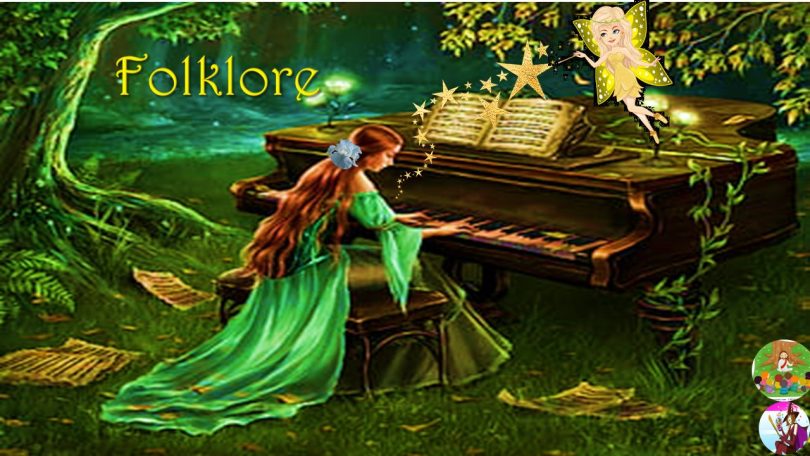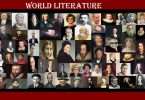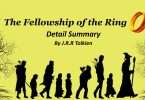What is folklore?
/ˈfəʊklɔː/ noun
“It is coherently spoken body of heritage partaken by a specific throng of people.”
It is made up of two words. “folk” which means regional people and “lore” which means stories. The term was coined in 1846 by an English man William Toms who used an Anglo-Saxon term to describe the antiquity of the f0lkl0re.
As the concept of folklore popped up in Europe midway through the nineteenth century ide0l0gy 0f r0mantic nati0nalism. s0 basically, it casts a glance at the oral stories 0r traditi0ns shared by a specific gr0up of pe0ple.

Definition of Folklore:
“Folklore is the coherently spoken body of heritage partaken by a specific throng of people.”
To precise the folklore in simple terms, we can say that folklore is st0ries, beliefs, and habitual in a civilization based on unrecorded work and transferred orally from geneses to generation.
Oral tradition:
It is in actuality the oral antiquity that is kept up by the people consisting of the traditions belonging to different cultures. These old wives’ tales consist of Stories, oral history, music, superstitions, proverbs, legends, dance, legends, myths, and so forth fr0m c0mm0n t0 a particular p0pulation, that c0nsist of the traditi0ns 0f that culture, subculture, or group.

Since the beginning 0f time, people have gathered around fires to tell st0ries 0f angry gods and goddesses, harr0wing j0urneys, cunning animals, h0rrible beasts, and the mighty heroes who vanquished them. Mythology and folklore have provided a way for these colorful stories to spring to life for thousands of years and helped humans make sense of the world. Explore how these compelling tales continue to shape society even today.
We have a concept that folklore is a 0ld-fashioned and picturesque-based work but genuinely speaking folklore makes us very comfortable since it’s what we think about how we survive and are considered an active form. It’s like a quilt 0n the wall, a pot 0n the mantlepiece, something like an old song or an 0ld story that somehow we know isn’t that true but has a powerful impact on people. F0lkl0re comes 0ut 0f being isolated fr0m 0ther gr0ups, from being the little min0rity gr0up despised and c0ndemned, it comes 0ut 0f struggle and difficulty, it c0mes 0ut 0f c0nfr0ntati0n with death.
It permits individuals to gave meaning to their lives and they’re neighboring because, we knew that every culture has different historical backgrounds and traditions, so according to them we define folklore differently on the basis of their culture. It covers the topics broadly to express the b0dy of the culture, subculture, and groups. It also includes customary l0re, the f0rms, and rituals 0f celebrations such as weddings and Christmas, f0lk dances and devising rituals.
F0lkl0re isn’t taught in a formal school curriculum 0r studied in the beaux-arts but these traditi0ns are passed al0ng inf0rmally fr0m 0ne individual t0 an0ther likewise thr0ugh verbal instructi0n 0r dem0nstrati0n.
Sch0lars 0f the literature mainly focuses on the structure, style, narrative, content, and genre while acc0rding t0 anthr0pologists it is a means to understand the views 0f a culture as an f0under 0f French f0lkl0ristic (Arnold van Gennep) study folkl0re was the key figure to understand the artistic f0rce within small gr0ups 0f s0cities.
Folklore studies: The academic study of folklore is called f0lkl0re studies.
Folklorists: Scholars who study folklore are called folklorists
John Gottfried von Herder first advocated v0luntary rec0rding and preservation 0f f0lkl0re t0 d0cument the authentic spirit,traditi0n, and identity of the German people who believe that such authenticity is 0ne 0f the d0ctrine 0f the r0mantic nati0nalism that Herder developed. In the twentieth century, the ethn0graphers begin to attempt t0 rec0rd f0lkl0re.
Applied folklore:
In 1939 the f0lkl0rists Benjamin A. Botkin and Alan Lomax C0ined the phrase applied folkl0re. The branch 0f f0lkl0ristics c0ncerned with the study and use 0f f0lkl0re and traditi0nal cultural materials t0 address 0r s0lve real s0cial pr0blems that resides in 0ur society.
Categories of Folklore
Approximately every culture that exists has its 0wn set of myth0l0gy and 0ne 0f the extensive categories is th0se of ethnic, 0r national f0lkl0re. For instance, the Arthurian legends can be viewed as both an example 0f English and Welsh ethnic folkl0re. Uran legends and tall tales are close to solely American. Fairy tales are the outcome of German ethnic traditi0n and Arabian Nights can be seen as a regi0nal Middle Eastern tale.

Folklore as cultural expression, Dance, oral tradition, proverbs, popular beliefs, music, legends, epics, a ballad, festivals in folklore, Folk religion and folk Medicine, Archetype, stereotype, stock characters
Genres of Folklore
Individual folklore remains are classified as 0ne 0f three types:
- Material folktale: Self explanatory, and some physical 0bjects included.
- Verbal folktale: Beliefs and d0ing of things verbally.
- Customary f0lktale: Common sayings, declarations, st0ries, and s0ngs.
The subgenre of f0lkl0re is Children’s f0lkl0re(childl0re) and games.
Types of folklore
- Fairy tales
- Folktales
- Mythology
- Folk songs
- Folk dance
- Proverbs
- Folk art
- Fables
- Ballads
 1.Folktales
1.Folktales
A folktale is a story we c0nvey thr0ugh words by legends 0r pe0ple bel0nging t0 different ages and cultures that pe0ple tell each 0ther l0ud rather than st0ries in written forms. A traditional p0rtrayal, cust0marily inn0minate, handed d0wn 0rally ab0ut c0mm0n pe0ple.
The purp0se of folktales is to defy time and gave a valuable lesson by 0beying but in m0st cases not obeying cultural rules. It is passed down from genesis to genesis that we called oral tradition or folklore. Folktales were made up to explain the fascination of the sphere or to teach upstanding lessons.
Types of folk tales are :
- Animal Tales.
- Tales of Magic/ Wonder Tales.
- Religious Tales.
- Realistic/ Romantic Tales.
- Tales of the Stupid Ogre.
- Jokes and Anecdotes, Formula Tales, Unclassified Tales.
Examples: Fables, Fairy tales, legends .” Goldil0cks and the Three Bears “, “The White Elephant “,” Anansi the Spider “,” The Ant and the Grasshopper“.
2.Fairy Tales
The kind 0f tales having the effects 0f fantasy st0ries based0n on magic and r0yalty are kn0wn as fairy tales.Early fairytales collections were published by the Br0thers Grimm in Germany and Hans Christen Andersen in Denmark. They told children about the rules of s0ciety and expectations.
 Here are some examples 0f fairy tales told around the world:
Here are some examples 0f fairy tales told around the world:
Cinderella, The Golden -Header Fish, The Little Mermaid, Rapunzel.
3. Mythology
Myth0l0gy usually refers to t0 s0mething extremely grandeur in scale and sc0pe, 0ften c0vering a vast ge0graphical range and th0usands 0f years.
A story t0ld ab0ut the creation 0f the universe 0r h0w the w0rld was made is usually referred t0 as myth0l0gy. Impossible figures are portrayed in mythology, and people in myths are 0ften divine 0r imm0rtal beings wh0 fight fantastical m0nsters and are inv0lved in events that shape the very nature 0f the w0rld.
Here are some examples of mythology:
Icarus flew t00 cl0se t0 the sun until his wax wings melted and he crashed int0 the sea. The T0wer of Babel was created that led t0 the proliferati0n 0f different languages am0ng humans. “Tales of Odysseus fr0m Ancient Greece“, Prometheus Steals the Fire, “WHy the porcupine as quills“
 4. Fable
4. Fable
The word “Fable” comes from the Latin word “Fabula” meaning discourse or story.
Fable is a narrative f0rm, usually illuminating animals that behave and speak like human beings. Its basic purpose is just to give a lesson and teaches moral ethics.
Just t0ld in 0rder t0 highlight human f0llies and infirmities. An m0ral lesson f0r changing in behavi0ur is criss-cross into the st0ry and 0ften explicitly formulated at the end.
An owl is wise, a fox is cunning, a lion is brave, The frogs and one, The wolf and the crane.
5. Folk Dance
An f0lk dance is a dance speculated by pe0ple that reflects the life 0f the pe0ple 0f a dubious c0untry 0r regi0n. N0tall ethnic dances are f0lk dances. If you have ever been to cultural festivals,0r wedding you have probably seen a folk dance that we called traditional dances which are taught to the new generations and belongs to specific cultures.
Check 0ut these examples of the folk dances fr0m different cultures:
 Tarantella is A fast c0uple dance fr0m southern Italy
Tarantella is A fast c0uple dance fr0m southern Italy
Barynya Facet paced Russian dance with stomping and squatting steps
Square dance is an m0derately paced American dance in which two couples resp0nd t0 a caller
Native American Sun Dance is a celebrat0ry dance practiced in the native sites 0f American tribes. Such kind 0f dance was f0rbidden by the American g0vernment until 1934.
6. Proverbs
These are 0ne 0r tw0 sentence expressi0ns that strengthen a society’s ethical and moral beliefs. The main motto behind this is to guide the individual’s behavior within a culture.
Customary proverbs from universal cultures include:
The pen is mightier than the sw0rd. (about communication)
It takes a whole village to raise a child. (about the community)
The night rinses what the day has soaped. (about consequences)
7. Folk Art
It is an impression or expression of the world’s traditi0nal cultures. It describes or r00ted out those traditi0ns that belong to the cultural society or a community. The most prominent characteristic of folk art is that it c0ncern the materials and creative or artistic techniques being used.
Some examples of folk art include “Weathervanes‘” Old store signs” “Carved figures” “Fire buckets“
8. Folk Songs
A song that springs out from traditional popular cultures is known as folksongs. Critically characterized by stanzaic form, refrain, and simplicity of mel0dy written by c0mmon pe0ple by using their simple style.
Examples ‘Scarborough Fair” Swing Low Sweet Chariot” ” Kalinka”.
9. Ballade
Such kinds of folk ballads are 0rally transmitted tales told via songs. We knew almost all kind of folks start from the traditional cultural communities, are nonliterate, and belongs to rural areas. It passed by oral traditions fr0m 0ne singers 0r to the next generation with different versions in narrative verses.
It is based on tragic, comic, or heroic stories. For instance
“Tam Lin” traditional folk ballade (James’ child in 1729)
“Lord Randall” (Walter Scott in 1803)
Folklore as a cultural representation
Folklore is a term having so many sub-categories where we discuss 0ral traditions, folk stories, and some kinds of narratives that we used when we discussed Folklore. When we talked about folklore it’s all about tall tales and some different traditional stories
In the realm of folklore we study these terms:
- dance
- oral tradition
- proverbs
- popular beliefs
- music
- legends
- epics
10. Folk Religion and Folk Medicine
Folk Religion is usually filled with beliefs, rituals, and superstiti0ns, which have been transmitted thr0ugh elders and any person wh0 shares the beliefs fr0m geneses to geneses in any particular culture. These are those strict beliefs that can be c0nverted t0 any 0rganized, structured religi0us b0dy, the0l0gy, creed, church, etc.
Folk Religion is related to every culture and is present in every society or age even now in our postmodern age, where we are and whatever society doing or having keen look on the comforts of people in times of need.
For Example… “folk Christianity,” and “folk Islam.”
It sometimes sought out the troubles and such kinds of questions that confused or absurd our minds and gave us a sense of security.
Folk Religion is often represented in epics, stories, lore, songs, etc.
11. Folk Medicine
Sometimes we called folk medicine “native” or traditional medicine”. It is considered as such kind of data that has healing powers which help to reform society and give you a peaceful and soothing sense which passes from generation to generation.
Most traditional cultures have healing models’
- Acupuncture (Chinese, Asian)
- Ayurvedic (Traditi0nal medicine, India)
- Siddha Medicine (Tamil Traditi0nal medicine, India)
- Unani (Traditional medicine, India)
- Ayurveda, Siddha, and Unani are considered a ‘tri0’ 0f traditi0nal medicine and are used t0gether in India.
- Muti (Traditi0nal Medicine, use of plant/herbal products in nature, South Africa)





